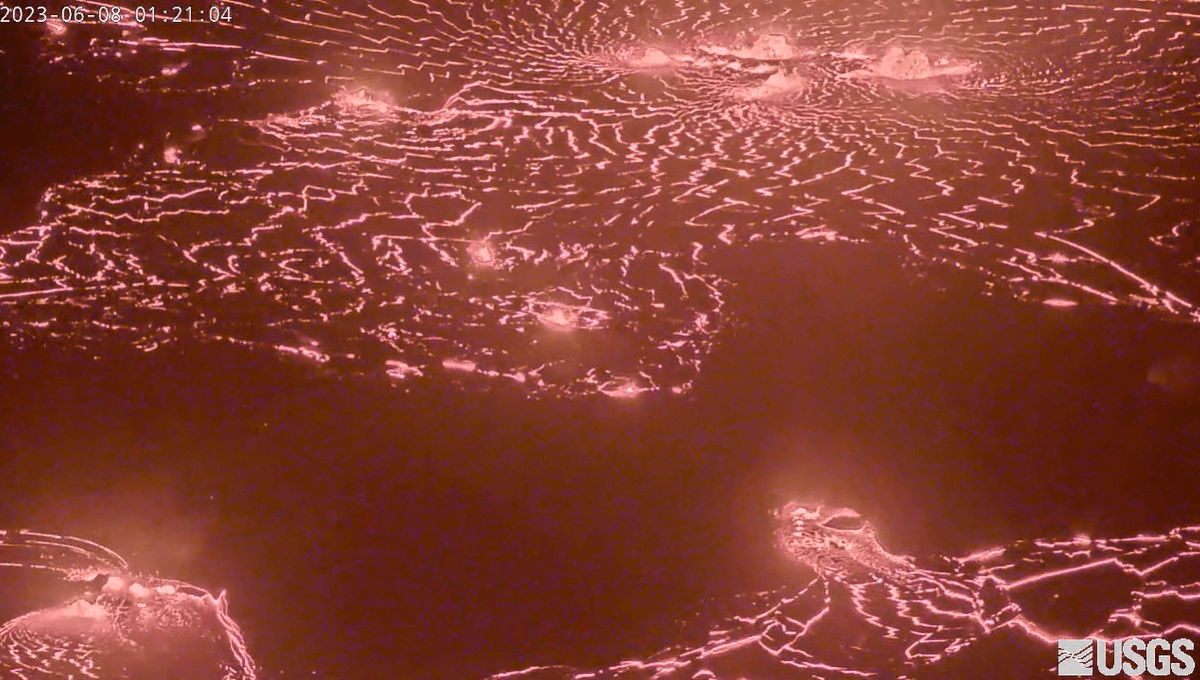
Hawaiʻi’s Mount Kīlauea volcano erupted once again this week, sending a deluge of noxious gas, volcanic glass, and lava into the surrounding area. A livestream of this magnificent – and very dangerous – spectacle can be seen in the video player below.
The eruption from the Halemaʻumaʻu crater of Kīlauea started at 4:44 am on Wednesday June 7, according to the US Geological Survey (USGS).
The initial lava flow was around 10 meters (32 feet) deep and filled the crater floor, an area of approximately 1.5 square kilometers (0.5 square miles), like a bathtub. The eruption also featured lava fountains that sprayed around 15 meters (50 feet) high, according to the National Park Service (NPS).
However, red-hot lava is not a major concern at the moment. The USGS says the prime hazard is the heaps of volcanic gas – primarily water vapor (H2O), carbon dioxide (CO2), and sulfur dioxide (SO2) – being pumped out by the volcano. It’s estimated that SO2 was being emitted at a rate of approximately 65,000 tonnes per day on the eruption’s first morning.
The high concentrations of SO2 have the potential to react with the atmosphere to create vog (volcanic smog), which poses a health hazard to people, farm animals, and the local ecosystem. People exposed to high levels of vog can experience headaches, watery eyes, sore throat, breathing difficulties, asthma attacks, and tiredness.
The USGS also warned that the lava fountains are kicking out a fair amount of volcanic glass fragments, created by rapidly cooled lava.
Residents of Pāhala, some 30 kilometers (20 miles) downwind of the volcano, reported a “very light dusting” of gritty volcanic ash on their cars and windows on the morning of the eruption. Local also came across Peleʻs hair, strand-like volcanic glass named after the Hawaiian goddess of volcanoes.
Given these dangers, the USGS has assigned the eruption with a red alert, the highest level of warning. Fortunately, though, there’s currently no indication that populated areas are threatened, tweeted the Hawaii Emergency Management Agency.
The NPS said they’re expecting the eruption to attract thousands of people and released a list of guidelines to help visitors to enjoy the event safely.
The name Kīlauea’s means “Much Spreading” in Hawaiian. Located along the southeastern coast of the Big Island of Hawaiʻi, it’s considered one of the most active volcanoes on Earth. The last major eruption was in January 2023 and until March, so there’s only been three months of inactivity prior to this latest upset.
While things are currently under control, Kīlauea always has the potential to turn nasty. Surprisingly, Kīlauea is also the most deadly volcano in the US and has killed hundreds of people in recorded history.
Source Link: Watch Hawaiʻi's Kīlauea Volcano Erupt In This Fiery Livestream